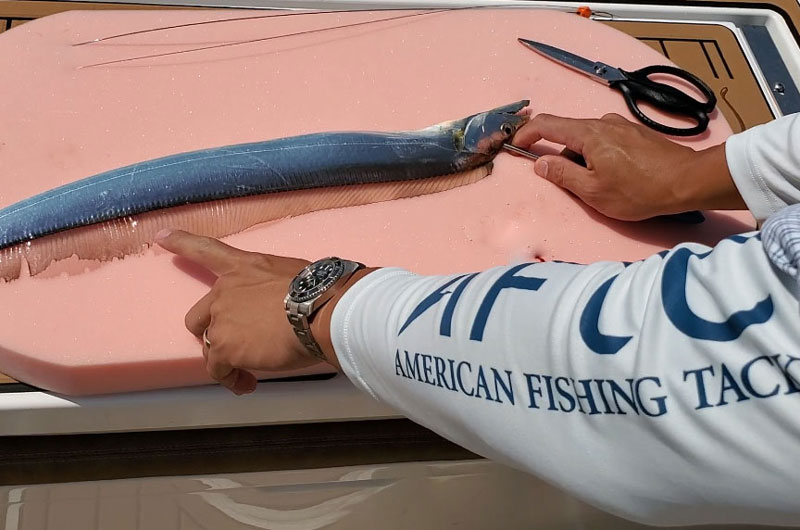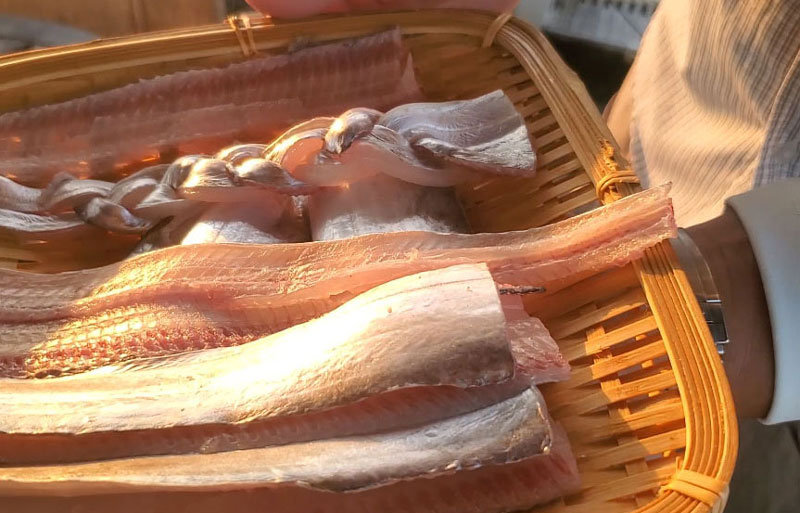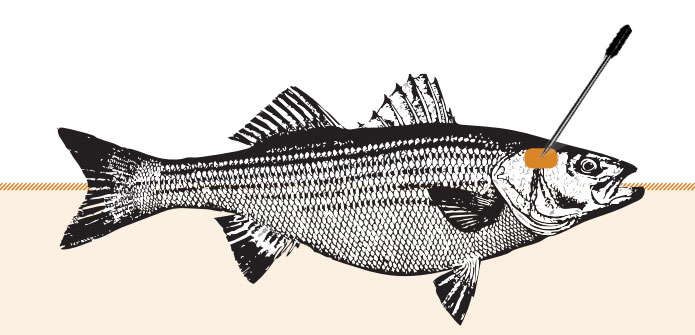You may have already heard about the Japanese practice of ike jime. It’s definitely a little mysterious. But the verdict is in — ike jime is the best way to harvest a fish you intend to eat. With a little practice and the right tools, you can experience world-class seafood from just about anything that you catch while Chesapeake Bay fishing. And as luck would have it, the company that brought ike jime to America is based in Maryland.

We went fishing with the president and founder of the Ike Jime Federation, Andrew Tsui. You may have seen him on the internet or in AFTCO videos demonstrating ike jime. As Andrew explains, “Ike jime is the Japanese word for ‘live killing.’ It’s the difference between conventionally harvested fish and world-class, sushi-quality products.” But Andrew emphasizes that a world-class level of quality does not mean you have to eat it raw. “It doesn’t matter whether you want to eat it raw, cooked, partially cooked, or rolled in papers and smoked — what you’re consuming is world-class, and that begins with the manner of death, not the recency of death.”
Ike jime is based on the same ideas we apply when it comes to livestock. Minimize stress, humanely kill and bleed the animal, and protect the meat quality with adequate refrigeration. In fact, this process is regulated by federal laws for livestock. But oddly, it’s not regulated for fish. The Japanese, on the other hand, apply these same techniques to fish. The most fascinating part is that ike jime completely transforms any fish into seafood that most people can only find at the most exclusive sushi and fine dining restaurants in the country.
Ike jime is a sequence of techniques that does take some practice. When Andrew came fishing with us, he showed us how to turn a ribbonfish, a fish that many people would never think to eat, into a dockside culinary experience we could have never imagined.
First, he lays the fish on its side and plunges a spike into its brain to kill the fish as quickly as possible. This technique protects the meat from the unnecessary effects of suffocation. Let’s not forget, fish cannot breathe out of water. Suffocation causes the fish to stress, and stress causes the fish to release compounds into their muscles that will affect the shelf-stability and flavor of the meat.
Where is the brain? In the fish’s skull, just up and behind the eyes. Andrew explained that limiting the effects of stress is the first priority, which he calls “a considered kill.” Done properly, the fish will seize up immediately, and its mouth and dorsal fin will flare.
Second, he bleeds the fish. Bleeding rids the carcass of the blood that would otherwise become a breeding ground for bacteria, and bacteria are what cause fish to stink and decompose. How? He lifts the gill plate and slides a knife along the curved edge where the gills connect with the body. Then, he cuts an incision through the tail (about two inches up from the tailfin), but without severing the tail completely. He then places the fish into a bucket of ambient temperature water, and lets the blood naturally pump out. For small fish, 10 to 15 minutes is sufficient.
Third, he paralyzes the now dead and bled fish by sliding a thin metal wire through a narrow channel that runs on top of the fish’s spinal column. This is where things get wild. The fish starts to move again while Andrew showed us how to repeatedly plunge the wire back and forth through the neural canal, until the fish is completely still. Andrew explained that by rupturing the fish’s spinal cord, its muscle movements are stopped at the cellular level. The specialized wire used to do this is called the “Circuit Breaker” because it will break the neural circuits in the fish’s spinal cord quickly and completely.

A fish that is brain spiked and then paralyzed cannot move, and therefore it will go into rigor mortis much more slowly. “Rigor mortis is one of the most misunderstood parts of seafood quality,” Andrew explains. “By delaying the onset of rigor mortis and keeping the fish cold during that term of rigor mortis, the negative effects of this natural stiffening process are greatly reduced, and now the fish can age.
Fourth, the fish is completely submerged into an ice slurry to rapidly chill the meat. A slurry is not your grandfather’s block of ice at the bottom of a dirty cooler. Instead, a slurry is a one-to-one mixture of ice and water that will rapidly cool the entirety of the fish’s body. This comprehensive cooling technique allows the fish to go into rigor mortis more slowly, and it will also allow the fish to cool evenly. Andrew directed us to keep the fish as straight as possible; if you have multiple fish, pack them “soldier style,” nose-to-tail, nose-to-tail.
As a lot of anglers know, how fish come over the rail is rarely what they look like back at the slip. Oftentimes, the fish are sallow, grey, contorted, and stiff. Not these ribbonfish. They were still glistening, reflecting light, and lifelike. After quickly trimming the fins, eviscerating, and filleting the ribbonfish, Andrew held up candy bar-sized pieces on a small plate. “These fish have no scales and a high fat content compared to other species. That makes them one of the most expensive menu items in Asia,” he noted. With a little salt and a blowtorch in hand, Andrew crisped up the fillets right in front of us. Using our fingers only, we tested buttery morsels of ribbonfish. There were no off flavors, because the fish did not stress. No fishy smells, because the bacteria were controlled.
The bigger surprise came a week later, because the Circuit Breaker wire did its job – it protected the meat against premature rigor mortis and allowed the fish to actually improve in flavor over time. After seven days of aging, the meat tasted like pure luxury.

We don’t often imagine the seafood harvested from the Chesapeake Bay in terms of “luxury.” Andrew believes that’s wrong, and hopes he can change peoples’ minds here and in the rest of the country. “Catching a fish does not ensure quality or even how ‘fresh’ it can be,” he says. “Quality is the result of a fisherman’s handling skill and technique. It boggles my mind that sport anglers who pride themselves on technical details, maps, gear ratios, knot strength, and lure weights quit before things get interesting. Follow through and finish the job.”
We think he’s on to something. If commercial watermen can learn these techniques, they can improve the market value of the fish they catch because they become superior products for extended periods of time. Increasing the value of the fish increases the value of the entire fishery, and that increases the value of the Chesapeake Bay overall. By the same token, if recreational anglers can learn these techniques, they have the opportunity to teach others how to differentiate various species on the plate and truly understand what makes them valuable.
And it seems the federal government is listening. This year, the Ike Jime Federation and the University of Rhode Island won the prestigious Saltonstall-Kennedy Grant from NOAA. They’re also under contract with the Nature Conservancy to improve handling techniques for the largest seafood producer in Central America. As Andrew explains, “In the absence of federal or state action to establish clear quality standards for seafood harvested domestically, the Ike Jime Federation trains and certifies stakeholders in the seafood industry to meet the most rigorous scientific standards today. We know that the next generation of American seafood producers has the courage to compete with the best in the world, but too often lack the information and tools to get them there. We’re here for the underdogs.”
Click to learn more about the Ike Jime Federation’s work and what they have in store for 2024, and find them at @ikejimefed.